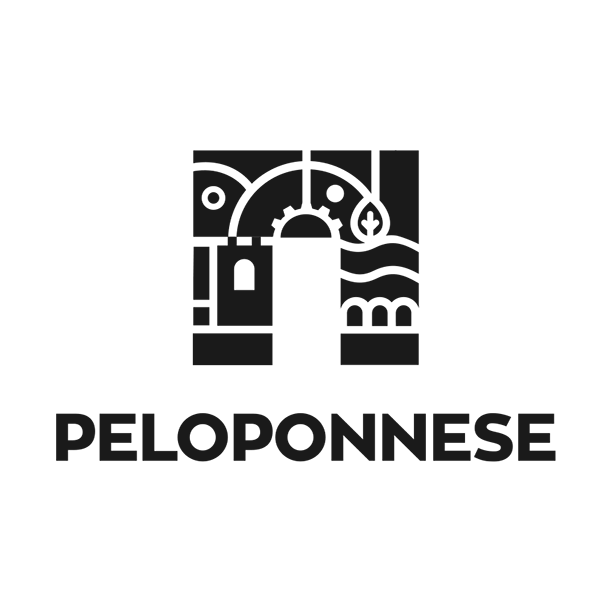The stonemasons from Lagadia and the surrounding villages in Arcadia have a special place in the architectural history of Greece. Their building skills were legend and they influenced the appearance of cities, towns and villages in Arcadia, the rest of the Peloponnese and in other parts of Greece.
The stonemasons from Lagadia and the surrounding villages in Arcadia have a special place in the architectural history of Greece. They influenced the appearance of cities, towns and villages in Arcadia, in the rest of the Peloponnese (Methoni, Kalamata, Sparta, Argos, Megara, Monemvasia, Gythio, etc.) and in other parts of Greece. Their building skills were legend, and the traditional stone-built houses you still see so many of today bear witness to their inventive and practical minds and to their intrinsic sense of elegance. In other words, how they managed to combine "the study of the earth’s geometry, the courage of construction, the logic of utility and a sense of beauty".
These craftsmen passed their knowledge down from generation to generation, especially during 17th to the early 20th century when there was a very strong demand for their skills. When the world moved on and industrial and technological changes meant that these skills were no longer needed all the old building techniques were lost. This “folk” architecture which had supported so many other social, economic and family structures had been overtaken by more modern developments.
It was a hard living, and as they very much needed the money they were forced to travel for work even in the midst of the harsh, snowy winters. Groups of tradesmen used to leave the village at dawn and travel for days to work on a job. It was a bitter and sad moment for everyone as they left on foot, their packs loaded with supplies and their animals carrying the tools and equipment. On route to their work they would either stop over at inns or just camp out in the wild.
Each group had tradesmen with all the different skills necessary - stone masons, builders, apprentices, etc, and they were all led by the master craftsman. The best craftsmen worked on the exterior of the building and those who were less skilful worked on the interior. Interestingly, the masons had developed their own guild language, a secret communication code which they used so that the owners and the other masons in the villages they were working in would not be able to understand them. They usually only had a verbal agreement with the person they were working with, and they would receive some payment up front. Of course, when the craftsmen returned to their village it was a time of real celebration with everyone running out into the streets to welcome them as they approached singing.
In addition to these stone-built houses, the craftsmen of Lagadia also left us their bridges. These masterpieces were more difficult to build because, as the craftsmen themselves said, they were "fighting against the river". The key stones they used weighed up to 400 kilograms before they were worked. Little by little they had to be worked perfectly and then the “pelikanos or pelican” – the person who put it the stone in place and who "finished the bridge down to the last centimetre" took over.
Master craftsmen from Lagadia and Eprius
There are many different ideas on how the people of Lagadia turned to building. Some say it all started with the Franks in the early 13th century, when they brought craftsmen from Campania in Lower Italy. Others say that the people of Lagadia simply turned to building because they could not do anything else in the barren area where they lived. Yet others say that they were taught the art by masterbuilders from Epirus. As Yiannis Tsiaousis, chairman of the Board of Directors of the “Blossoming Stones“ group and associate professor of Anatomy at the Medical School of the University of Crete says (during an interview in the Greek portal Documento News): "The first and perhaps most important thing that connects them is the mountainous area. And this does not only relate to the similarities in the geographical lie of the land such as its rugged features, but also to the anthropological characteristics that come with it. Craftsmen from Lagadia and Epirus worked together on various projects in Greece. In the collective subconscious of the Lagadians there was, and still is, the idea of a special relationship with the people of Epirus, which is probably not limited to them having the same craft. In the "Notebooks" of master craftsman H. Gardikas (1907-97), which are in the Antheo of Petra archives, extensive reference is made to his family's craftsman tradition, with the founding father settling in Lagadia in 1817 after coming from Gardiki in Epirus. In addition, some two-syllable Lagadian surnames are also found very frequently in Epirus".
Did you know that...
Blossoming Stones
The non-profit association "Friends of Traditional Architecture" does a lot of interesting and important work. For example, they find and identify the "craftsmen’s roads" where the Lagadia stonemasons travelled and worked. Research has shown that groups of craftsmen from other areas in Greece such as Epirus, Tinos and the Mani also worked there, and at times they all worked together to complete a project. The “Land Beyond” group in Zagoria, Epirus was formed for similar reasons.
Find the destination on the interactive map below. Open on Google Map.
Weather
Σχετικό περιεχόμενο χρηστών (UGC)
Ενημερωθείτε για ενδιαφέροντα θέματα γύρω από τον προορισμό μέσα από το περιεχόμενο των χρηστών μας
Newsletters
- About Us
- FAQ's
- Map
- Tourism Information Centers
- Disclaimer
- Sitemap
- Our Brand
- Media Room
- Add your Business
- Corporate
- MICE

Peloponnese. The land of impossible beginnings





Design and creation from Cosmote
Marinas and Moorings
Diving Centers
Get Inspired
- Media Gallery
- Peloponnese Travel Blog
- The Peloponnese in the Media
- Your Feedback
- Users' General Content
- Users' Local Products
- Users' Events Content
- Ask a Local
More
- My peloponnese vibe
- Our providers Network
- Destinations Map
- Weather
- Public Transport
- Frequently Asked Questions
- Useful Phones
- B2B
- Destination Statistical Data
- Contact

